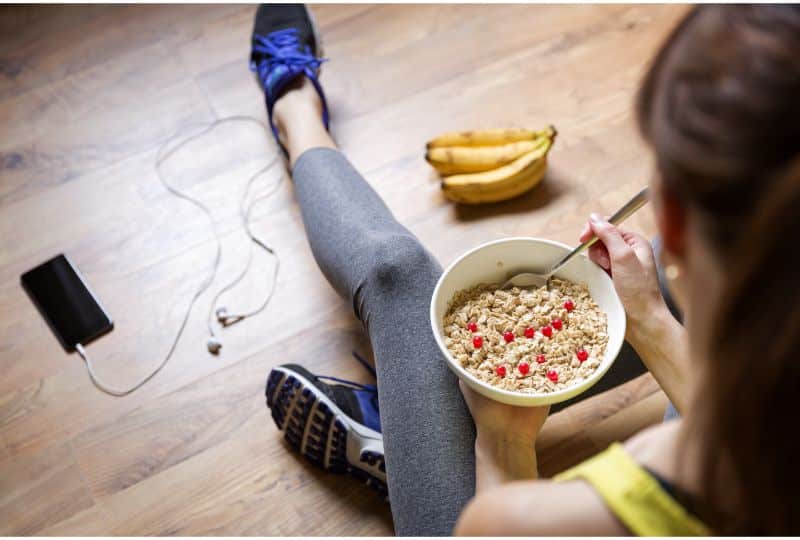Is Sprinting Better Than Jogging
This page contains affiliate links. As an Amazon Associate I earn from qualifying purchases.
You can get in better shape by running and/or sprinting. But which is best? In this post, we will take a look at both sprinting and jogging and find out which is better for your fitness.
Quick Navigation
Sprinting – Careful Does It
In the event that you have not run for a long time or if you haven’t been active, sprinting workouts may be too strenuous for you.
As a matter of fact, the best approach to getting into shape in the early part of a new program is to start out walking, building up to a walk-and-jog routine, then increasing the time you spend running so that you run non-stop for 30 minutes, and finally incorporate sprint intervals.
If you already run, one of the advantages of sprinting is that it enhances your fitness level, particularly if you do a similar run several times a week. When you perform primarily sprinting workouts, running non-stop for 30 minutes or more improves your cardiovascular endurance, but it degrades your performance ability in sprints.
Injuries
In comparison to running at a lower intensity for a longer period of time, sprinting has a higher risk of musculoskeletal injuries. It is important to be aware of the position of your arms while sprinting. Keep the elbows bent at a 90-degree angle at all times so that you don’t waste energy during arm movements.
If you have problems with your lower-body joints, sprinting may make them worse. It would be more harmful for you to run at this pace than to jog slower. If you plan to do any exercise, you should consult your doctor first.
Benefits of Running and Sprinting
You can lose weight by sprinting and running. When you have just 20 minutes, sprinting and walking will burn more calories than running non-stop for 20 minutes. In comparison with steady running, sprinting burns more calories after the workout.
After 45 minutes of running, your body is more likely to burn fat instead of carbohydrates, which results in better fat-burning capacity. You can use sprinting and jogging to improve your cardiovascular health, body composition, and heart health by incorporating both types of training methods.
The Difference Between Anaerobic and Aerobic Exercise
Aerobic metabolism uses oxygen to create energy; anaerobic metabolism converts food into energy your cells can use without oxygen.
After 3 minutes, your body begins making energy primarily from aerobic metabolism. Your sprints are powered by anaerobic metabolism if you sprint for 30 seconds, followed by a walk. Your endurance and fitness are improved with an enhanced anaerobic system.
Sprinting vs. Jogging or Running
In order to improve performance, middle-distance runners should include a sprint workout in their conditioning program. Runners and sprinters benefit from sprint intervals as they increase the lactic acid buildup that leads to muscle fatigue.
For instance, if you run 5-kilometer races and your sprint training program is implemented once a week or every other week, you can run faster for a longer period, beating your personal record and improving your fitness.
Sprinters should not be running non-stop for 5 kilometers in their conditioning programs. This is because running non-stop will change the metabolic state of the muscles, which is not beneficial for short training sessions. Sprinters who run long distances every week or every other week will see their performance drop.
As with weight training, sprinting helps build muscles similar to jogging. On the other hand, sprinting works dozens of muscles simultaneously instead of focusing on one body part at a time. This makes it an excellent total body exercise.
Exercise experts recommend jogging as a warm-up exercise before sprinting, which has different muscle-strengthening effects.
As a result of the different ways the fibers are activated during sprinting and jogging, you can compare their effects on the muscles. In contrast, jogging activates and boosts endurance while stabilizing.
Experts say that sprinting is the most effective form of cardio for staying in shape and maintaining a healthy weight. Jogging burns calories, too, but experts recommend sprinting to maintain your weight. Researchers have found that sprinting for 2 1/2 minutes can burn 200 calories. 15 minutes of sprinting burns 1200 calories.
EPOC and other beneficial effects of sprinting include the burning of calories even after a workout has been completed or excess post-exercise oxygen consumption.

How to Make Your Workout Routine as Effective as Possible
You must use all your energy and muscle power when you run short distances at high intensity. While jogging might be easier, you will achieve greater results in less time through sprinting. The equivalent of 15 minutes of sprinting is one hour of cardio, such as jogging. Therefore, this workout is just as effective and takes less than half the time.
Develop a Strong Core
Sprinting is better than jogging because of its intense aerobic power when it comes to reducing abdominal fat, waist circumference, and overall weight. When it comes to toning your abs, sprinting is definitely the way to go.
Keep Your Heart Healthy by Sprinting
Sprinting has many benefits, including weight loss and cardiovascular health. Training your fast-twitch muscles (type II muscles) can improve your heart health.
You pump your heart harder when you sprint, improving blood circulation as a result.
Consequently, your heart is able to spend more time in a healthier state and thereby reduce the likelihood of suffering from heart disease.
You Keep Losing Weight After Your Sprint
A sprint is one of the most effective ways to burn a lot of calories in a short period of time. However, the best part of the workout is that you will lose weight even after you have finished the workout. There is one simple reason for this. When you sprint, you burn more calories even when you stop sprinting because when you sprint, you kickstart your metabolism, which allows you to burn more calories.
Final Thoughts
If you are doing any new exercises, make sure to seek the advice of your healthcare provider. It is vital that you choose exercises that are best suited to your individual situation.



